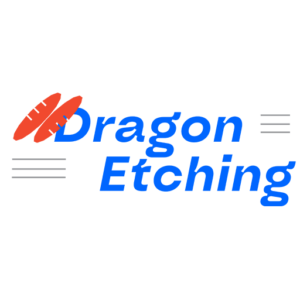
Tungsten is a popular metal in chemical etching due to its unique characteristics. In this article, we will explore the specific features of tungsten as a material in chemical etching and delve into common tungsten alloys used in the market.
Characteristics when chemically etching Tungsten:
Tungsten is a hard and dense material that can be easily etched using chemical methods. Some of its notable characteristics during chemical etching include:
High corrosion resistance: Tungsten has excellent resistance to corrosion, making it an ideal material for etching applications. It can withstand prolonged exposure to acidic solutions used in the etching process without degrading its integrity.
High melting point: Tungsten has a high melting point of 3422°C, making it a popular choice for applications requiring high-temperature resistance.
High density: Tungsten has a high density of 19.3 g/cm3, making it suitable for applications requiring high mass and weight.
Hardness: Tungsten is an extremely hard material, making it resistant to wear and tear. This property makes it ideal for applications where the material will undergo significant stress.
Characteristics of Tungsten:
Apart from the above features, tungsten has other notable characteristics, which make it a popular material in many industries. These include:
Ductile: Tungsten is highly ductile, meaning it can be easily formed into various shapes without cracking or breaking.
High thermal conductivity: Tungsten has high thermal conductivity, making it an excellent conductor of heat.
Non-toxic: Tungsten is non-toxic and is considered a safe material for use in various applications.
Difference between traditional sheet metal precision processing VS Chemical etched sheet metal processing
VECO’s video to learn what metal etching is.
Comments related to etching technology:
From @chadr2604:
There is another way it involves stacking many layers of very thin material with an There is another way it involves stacking many layers of very thin material with an adhesive, pressing the stack, then either stamping or punching the blank then heating it to release the adhesive. The parts will not be as accurate the tolerance is limited to about .002″ but if its good enough its much faster.
From @chadr2604:
If you try to cut that stack with a laser you will just start a fire we had an aluminum fire trying that.
Modern precision sheet metal fabrication includes a common technique known as etching, which differs from traditional sheet metal fabrication in several ways. Here are some key differences between etching and traditional precision sheet metal fabrication:
- Principle: Traditional sheet metal fabrication typically involves mechanical processes such as cutting, bending, and punching to shape and form metal sheets. Metal etching by Metal Etching Machine , on the other hand, is a chemical process that uses specialized etchants to selectively corrode the metal surface, achieving precise etched patterns and features.
- Accuracy and Complexity: Etching offers advantages in terms of precision and complexity. By controlling the composition, concentration, temperature, and etching time of the etchant, extremely fine etching can be achieved with accuracy down to sub-micron levels. Additionally, etching allows for the creation of intricate geometries, microstructures, and patterns that may be difficult to achieve using traditional mechanical methods.
- Processing Speed and Cost: Etching generally offers faster processing speeds, particularly in large-scale production. In comparison, traditional mechanical fabrication methods may require more time and cost to achieve the same level of precision and complexity.
- Materials Compatibility: Etching techniques are applicable to a range of metal materials, such as copper, aluminum, stainless steel, and titanium. Traditional sheet metal fabrication methods may have limitations when it comes to certain materials or thicker metal sheets.
- Design Flexibility: Etching provides greater design flexibility. By incorporating techniques like photolithography or screen printing during the etching process, complex patterns and structural designs can be achieved. This makes etching suitable for applications in microelectronics, optical devices, microfluidic devices, and more.
Common Tungsten Alloys:
There are numerous tungsten alloys available in the market, each with unique characteristics that make them suitable for specific applications. Some of the common tungsten alloys include:
Tungsten Carbide: This alloy is a combination of tungsten and carbon, making it an extremely hard and wear-resistant material. It is commonly used in cutting tools, mining equipment, and industrial machinery.
High-Speed Steel: This alloy contains tungsten, along with other elements such as chromium, vanadium, and molybdenum. It has excellent wear resistance and is commonly used in cutting tools and machining applications.
Tungsten Heavy Alloys: These alloys contain tungsten, along with other heavy metals such as nickel, iron, and copper. They have a high density, making them ideal for applications requiring high mass and weight, such as aerospace and defense.
Tungsten Copper Alloys: These alloys contain tungsten and copper, and have high thermal and electrical conductivity. They are commonly used in electrical and electronic applications, such as heat sinks and electrodes.
In conclusion, tungsten is a versatile material with unique characteristics that make it an ideal choice for chemical etching applications. Its high corrosion resistance, high melting point, and density, as well as its hardness, make it a popular choice in various industries. Additionally, the numerous tungsten alloys available in the market make it possible to select the most suitable alloy for specific applications.
If you have an Tungsten etching project that you need help with, please contact us

